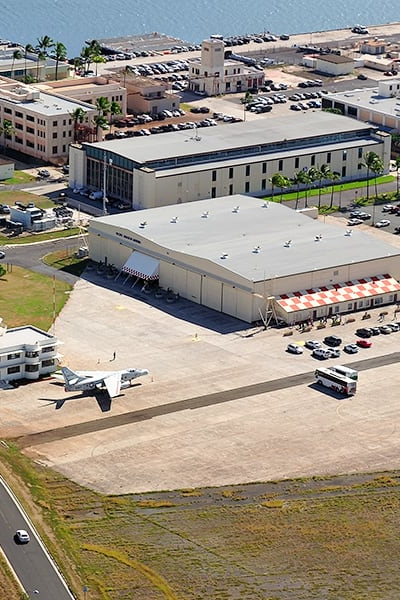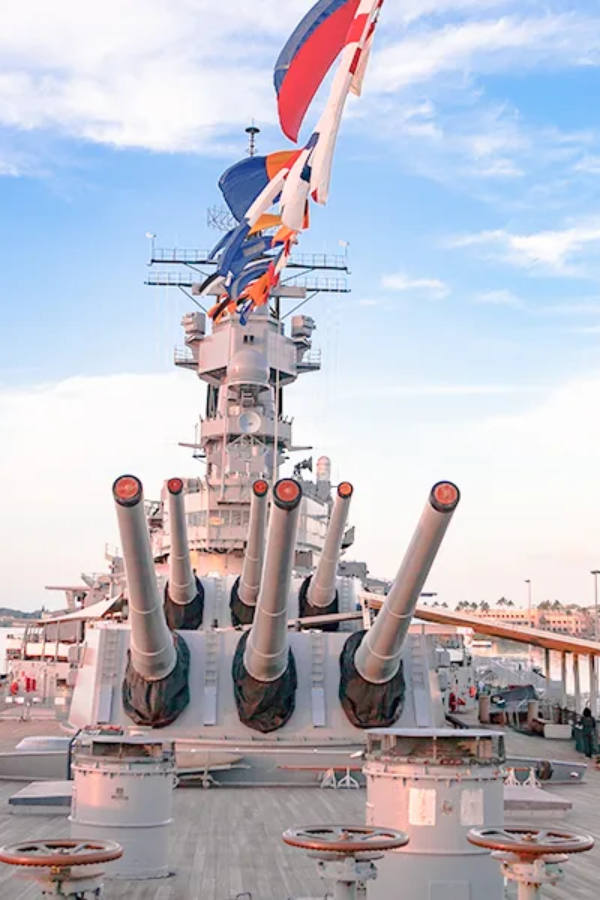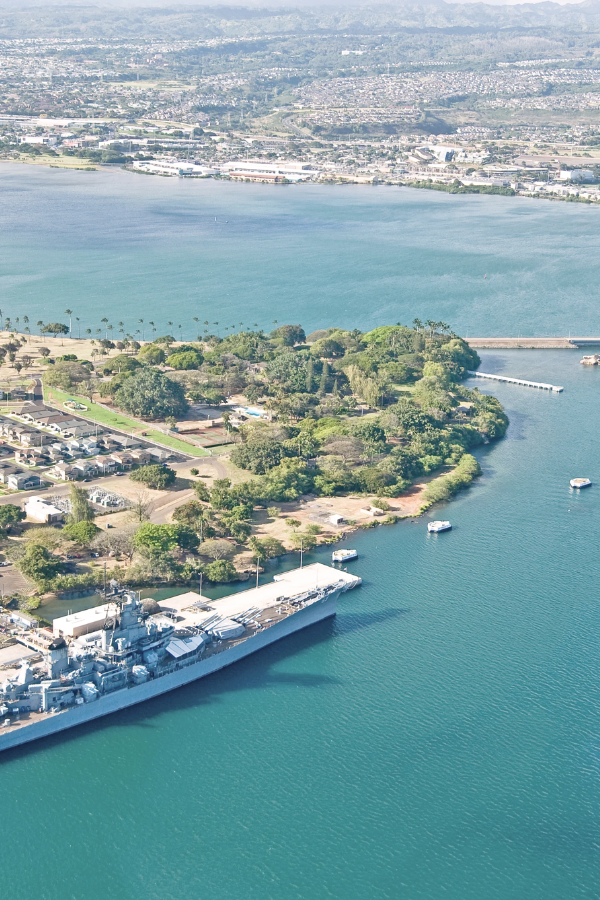Featured image © Royal Hawaiian Limousine
Punchbowl Cemetery is a place of great significance and solemn beauty in the city of Honolulu, Hawaii. Located on the slopes of Puowaina (aka Punchbowl Crater), this cemetery has been an important part of Hawaiian culture for centuries This sacred ground stands as a reminder that while death may take us away from this world, our memories will always remain in the hearts and minds of those we left behind.
Highlights
- Punchbowl Cemetery in Hawaii is the final resting place for more than 53,000 veterans and their families, including those who served in World War II.
- The cemetery was established in 1949 and covers an area of about 49 acres on the slopes of Punchbowl Crater, making it one of the most unique cemeteries in the world due to its location atop an extinct volcano.
- The cemetery is open year-round for visitors looking to pay their respects or simply take in the natural beauty of the grounds
- The cemetery also serves as a place where family members can come together to remember their deceased loved ones through special ceremonies such as wreath laying or annual observances like Memorial Day or Veterans Day.
History
Established in 1949, the National Memorial Cemetery of the Pacific also known as the Punchbowl Cemetery is a final resting place for U.S. military personnel who served in the Pacific Theater of World War II. Formed by a volcanic eruption thousands of years ago, this unique landscape features a crater that earned it the nickname “punchbowl.” Its ancient Hawaiian name, Puowaina, meaning “Hill of Sacrifice,” reveals its historical significance as both a burial ground and a site of rituals and offerings. The cemetery’s unique design features flat granite headstones set within carefully landscaped grass lawns surrounded by native trees and shrubs. In the late 1890s, a proposal was made to use the Punchbowl as a new cemetery for Honolulu’s growing population. However, it was denied over concerns about water pollution and the idea of a city of the dead atop a city of the living. Congress later approved a small fund to establish a national cemetery in Honolulu, with the provision that it must be donated and acceptable to the War Department. Fast forward to 1943, the governor of Hawaii offered the Punchbowl as a burial site, but the allocated $50,000 was insufficient. Finally, in 1947, Congress and veteran groups pressured the military to find a permanent burial site for thousands of World War II servicemen’s remains, who were awaiting interment on the island of Guam.
The Army commenced planning the Punchbowl cemetery once again in 1948, securing funding and starting construction in February of that year. On July 19, 1949, the cemetery opened to the public honoring five war dead. The cemetery distinguished itself with its installation of Bicentennial Medal of Honor headstones, with 23 of them marking the graves of those who gallantly served their country. Today, the National Memorial Cemetery of the Pacific has become a popular attraction with over five million yearly visitors coming to pay tribute to the fallen and take in the awe-inspiring panoramic views from the crater.
Famous People Buried in the Cemetery
With 53,000 individuals laid to rest at Punchbowl National Cemetery, some of them are likely notable veterans of the US military. One of the most celebrated gravesites in Punchbowl Cemetery is that of President Barack Obama’s maternal grandfather, Stanley Armour Dunham. During World War II, he fearlessly served as a sergeant in the U.S. Army, enlisting right after the notorious attacks on Pearl Harbor.
Another notable individual is Daniel Inouye, a decorated World War II veteran who went on to become Hawaii’s first U.S. Senator. He was known for his exemplary service both as a soldier and later as a senator, earning him numerous awards including the Medal of Honor. The gravesite of Lieutenant Jerry Yellin also serves as a reminder of the sacrifices made by military personnel during World War II. Lt Yellin was one of the last fighters to take off from Iwo Jima before it fell to Japanese forces in 1945, and he was awarded several medals for his bravery during wartime. The cemetery also houses the remains of Pfc Richard Tamashiro, who died while fighting in Vietnam.
Burial Space and Eligibility
The National Memorial Cemetery of the Pacific offers space for cremated remains in their columbarium and, in some cases, may accommodate casketed remains alongside previously interred family members. Although burial space may become available due to disinterment or other reasons, it is not possible to predict when this may occur.
If you or a loved one served in the armed forces, you may be eligible for burial in a national cemetery. This includes any member who completed active duty service and was discharged under non-dishonorable conditions. However, it’s not just limited to veterans. Spouses, widows, widowers, and minor dependent children may also be eligible. In certain cases, unmarried adult children with disabilities may also qualify. Eligible spouses and children can be buried even if they pass away before the veteran. Additionally, members of the reserve components who die while on active duty or during training, or who were eligible for retired pay may also qualify. Consider this as a dignified resting place for those who have served our nation. To inquire about available space, please contact the cemetery at the time of need.
Visiting Punchbowl Cemetery
How to Find Your Loved One's Grave at Punchbowl Cemetery
For those looking to find their loved one’s grave at Punchbowl Cemetery, there are several options available. Firstly, visitors may view a map of the graveyard online or pick up a copy of the Punchbowl Cemetery Guide from the visitor center which includes information on notable gravesites and monuments. Additionally, there are volunteers and staff members on site that can assist with locating specific gravesites upon request.
Floral and Grounds Policy
- The National Memorial Cemetery of the Pacific does not allow visitors to maintain gravesites.
- Fresh-cut flowers, floral wreaths, and sprays in metal containers may be placed on graves, designated areas, or in approved flower vases.
- The cemetery staff will sweep the cemetery every Friday to enhance the cemetery’s appearance. Permanent vases will be emptied and placed in holders for easy access. Flower vases will be emptied and placed in bins after cleaning.
- Permanent plantings and commemorative items are not permitted on gravesites.
- Potted plants and artificial flowers are only permitted on gravesites five days before and five days after Christmas Day.
- Floral items and decorations are not allowed on grave markers, niche covers, or columbarium walls.
- The religious convention of placing fruits and non-alcoholic beverages on graves is allowed but must be minimized due to limited space in the Columbarium.
Admission
Visit the cemetery daily from 8:00 a.m. to 6:00 p.m. On weekdays, the office is available from 8:00 a.m. to 4:30 p.m. It’s closed on all federal holidays, except for Memorial Day.
Taking a Tour
Taking part in one of the guided tours offered by local organizations or volunteer groups is an excellent way for travelers to learn more facts about the area’s rich history while showing respect for those laid here. At gravesites, visitors can spend time reflecting on memories shared with their loved ones. Incense is sometimes burned as a symbolic gesture for offering prayers or wishes to departed family members. Guided tours of Punchbowl Cemetery are available year-round for visitors interested in learning about the significance behind its many memorials. When leaving Punchbowl cemetery it is customary to bow your head out of reverence towards those laid here before you.
Frequently Asked Questions (FAQs)
Punchbowl Cemetery, also known as the National Memorial Cemetery of the Pacific, is located in Honolulu, Hawaii. It is situated in a crater at the summit of Puowaina (Hill of Sacrifice) and overlooks Downtown Honolulu and the beautiful Waikiki skyline.
There are currently more than 53,000 gravesites at Punchbowl Cemetery with over 13,000 soldiers and sailors who died during World War II.
Yes! The US Department of Veterans Affairs National Cemetery Administration hosts several events throughout the year that are open to the public such as Memorial Day services, Flag Folding Ceremonies, and Remembrance Ceremonies honoring veterans from all branches of service.
The Hawaiian name for Punchbowl Cemetery is Pūowaina or the National Memorial Cemetery of the Pacific. This sacred site, which translates to “Hill of Sacrifice” in Hawaiian, has been significant to the Hawaiian people for centuries. The volcanic crater, which erupted over 75,000 years ago, holds a deep religious and cultural importance.
Punchbowl Crater is an extinct volcanic tuff cone located in Honolulu, Hawaii.
Not only does Punchbowl Cemetery offer a stunning view of Downtown Honolulu and the Waikiki Beach skyline; but it also serves as a place of honor and remembrance for our nation’s fallen service members.
How To Get There
Located between the Honolulu International Airport and the Waikiki Hotel area, it’s just a quick drive away. Take the Interstate H-1 East ramp to Honolulu/Waikiki and keep going for 4 miles. Next, get off at exit 21A (Pali Highway) and head left at the stoplight. Then turn right onto School Street before following it to a four-way intersection with a stoplight. From there, take a left onto Lusitana Street and after .1 miles, take a right onto Puowaina Drive. Stay on Puowaina Drive for .7 miles and then make a slight right (still on Puowaina Drive) to reach the cemetery gates.




